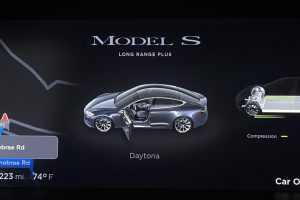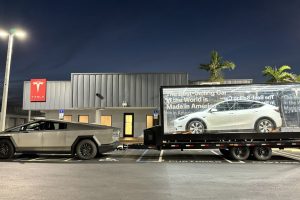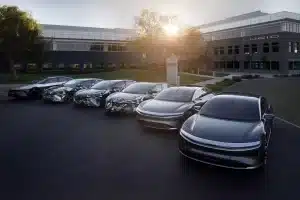- 🔥 Ford is recalling over 200 F-150 Lightning units due to a loose or missing retention nut on the high-voltage battery.
- ⚡ The National Highway Traffic Safety Administration (NHTSA) issued a recall notice affecting as many as 216 F-150 Lightning units.
- 🚚 The affected vehicles were produced between October 31, 2022, and August 2, 2023.
- 🔩 The missing or loose retention nuts on the high-voltage battery junction box bus bars could lead to electrical arcing and increase the risk of fire.
- 🚨 Owners are advised to bring their affected F-150 Lightning to a Ford or Lincoln dealer for inspection and service, which will be performed at no charge.
As automotive enthusiasts, we often marvel at the cutting-edge technology and sleek design of modern vehicles. However, amidst the excitement of innovation, it’s essential never to overlook the paramount importance of safety. Recently, Ford made headlines with its recall of over 200 F-150 Lightning units due to a critical safety issue involving the high-voltage battery system. In this blog post, we’ll delve into the details of this recall, examine its implications, and discuss the significance of prioritizing safety in the automotive industry.
Understanding the Recall
The recall centers around a loose or missing retention nut on the high-voltage battery junction box bus bars in certain F-150 Lightning units. According to the National Highway Traffic Safety Administration (NHTSA), this issue affects vehicles produced between October 31, 2022, and August 2, 2023. The potential consequences of these missing nuts are severe, as they could lead to electrical arcing, posing a significant fire risk.
The Importance of Timely Action
In response to this safety concern, Ford has taken proactive measures to address the issue promptly. Owners of affected F-150 Lightning units are urged to bring their vehicles to Ford or Lincoln dealers for inspection and service. This service will be performed at no charge to the owner, emphasizing the company’s commitment to customer safety and satisfaction.
Implications for Vehicle Safety
The recall serves as a sobering reminder of the complex interplay between innovation and safety in the automotive industry. While advancements in technology have undoubtedly improved vehicle performance and efficiency, they also introduce new challenges and risks. As vehicles become more reliant on sophisticated electronic systems, manufacturers must remain vigilant in identifying and mitigating potential safety hazards.
Prioritizing Safety in Automotive Design
At the heart of every vehicle design should be a steadfast commitment to safety. Manufacturers must integrate rigorous testing protocols and quality control measures into their production processes to identify and address safety issues proactively. Additionally, ongoing monitoring and feedback mechanisms are essential for detecting and responding to emerging safety concerns in a timely manner.
Consumer Trust and Confidence
The swift and transparent handling of safety recalls is crucial for maintaining consumer trust and confidence in automotive brands. By demonstrating a proactive approach to safety and accountability, manufacturers can reassure customers that their well-being is a top priority. Open communication channels and clear guidance for affected vehicle owners are essential elements of an effective recall strategy.
Looking Ahead: Lessons Learned
As the automotive industry continues to evolve, there will inevitably be challenges and setbacks along the way. However, it is through these experiences that valuable lessons are learned, driving continuous improvement and innovation. The Ford F-150 Lightning recall serves as a valuable reminder of the importance of vigilance, accountability, and collaboration in ensuring the safety of all road users.
Conclusion: A Shared Responsibility
In conclusion, the safety recall of F-150 Lightning units underscores the shared responsibility of manufacturers, regulators, and consumers in ensuring vehicle safety. By working together to identify, address, and prevent safety hazards, we can create a safer and more sustainable future for mobility. Let us remain vigilant, proactive, and committed to prioritizing safety in all aspects of automotive design and production.





